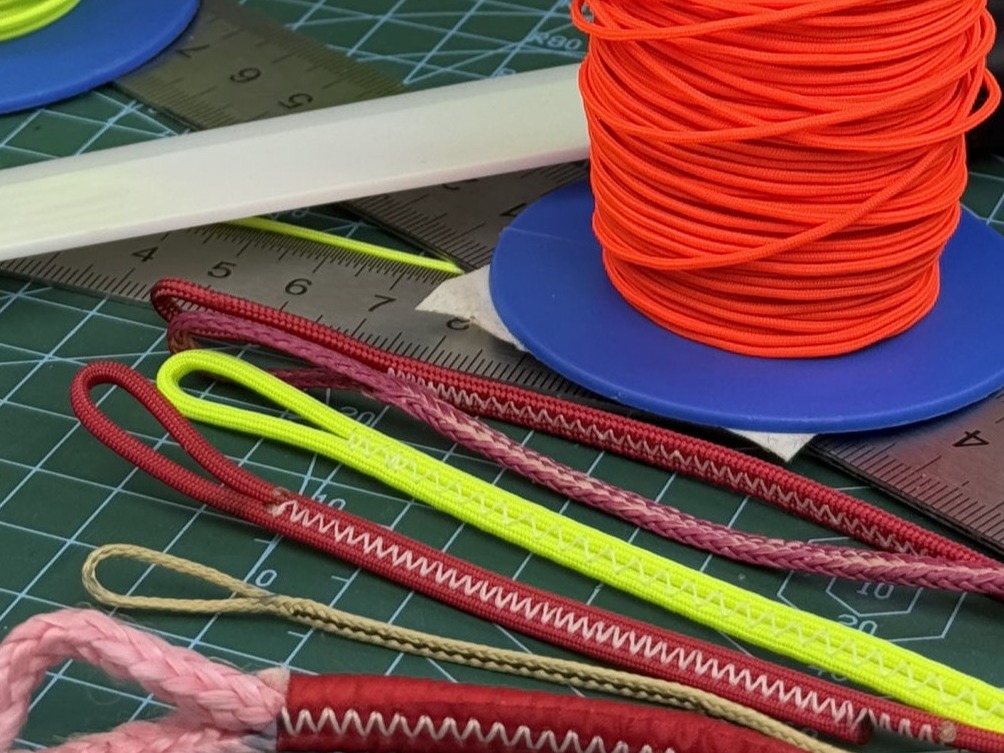
A Comprehensive Guide to Paraglider Lines: Types, Materials, and Their Characteristics
Paraglider lines are the unsung heroes of flight, acting as the vital link between you and your wing. Their design, material, and construction significantly impact the performance, safety, and durability of your paraglider. In this blog, we explore the types of paraglider lines, the materials used to make them, and their key characteristics, such as elasticity, durability, and cost.
Types of Paraglider Lines
Paraglider lines are generally categorised based on their function within the wing structure: A-lines, B-lines, C-lines, and brake lines.
A-Lines: Closest to the leading edge, these lines take the most load during flight. They are crucial for stability and are typically the strongest in the system.
B-Lines: Positioned behind the A-lines, they support the middle section of the wing and assist in controlling its shape during flight.
C-Lines and Brake Lines: Found near the trailing edge, these lines handle less load but play an essential role in manoeuvrability and control.
Each set of lines is carefully tuned for strength, elasticity, and resistance to wear.
Materials Used in Paraglider Lines
Modern paraglider lines are made from two primary materials: Kevlar (Aramid) and Dyneema (UHMWPE). Each material has unique properties that influence its performance.
Kevlar (Aramid)
Kevlar is a popular choice due to its low stretch, excellent strength-to-weight ratio, and resistance to UV radiation. However, it is prone to wear from abrasion and may degrade faster if not properly maintained.
Durability: Moderate; requires frequent checks.
Elasticity: Minimal, ideal for precise performance.
Shrinkage: Low when exposed to heat.
Cost: Generally more expensive.
Dyneema (UHMWPE)
Dyneema offers exceptional strength and is highly resistant to abrasion and moisture. It is lighter than Kevlar but has a tendency to stretch over time, which can affect wing performance.
Durability: High, especially in wet or abrasive conditions.
Elasticity: Moderate; may stretch under load.
Shrinkage: Minimal, but sensitive to temperature changes.
Cost: Affordable, making it popular among beginners.
Factors Affecting Durability
UV Resistance: Continuous exposure to sunlight degrades all line materials. Protective coatings can mitigate this but won't eliminate it entirely.
Abrasion: Friction from usage or ground handling can weaken lines, particularly Kevlar. Regular inspections are necessary to identify wear early.
Moisture Resistance: Dyneema performs better in wet conditions, while Kevlar can weaken when damp.
Pros and Cons
Material Pros Cons
Kevlar High precision, low stretch Prone to abrasion, costly
Dyneema Lightweight, durable ` Stretch over time, less UV-resistant
Cost Considerations
Dyneema lines are generally more budget-friendly and are commonly used in beginner and intermediate wings. Kevlar lines, though pricier, are favoured by advanced pilots who prioritise performance over cost.
Conclusion
Choosing the right paraglider lines involves balancing durability, elasticity, shrinkage, and cost against your flying style and needs. Regular maintenance, including cleaning and inspection, can extend the life of your lines regardless of material. Whether you prioritise precision or durability, understanding the characteristics of paraglider lines ensures you stay safe and maximise your flight performance.
Happy flying!
